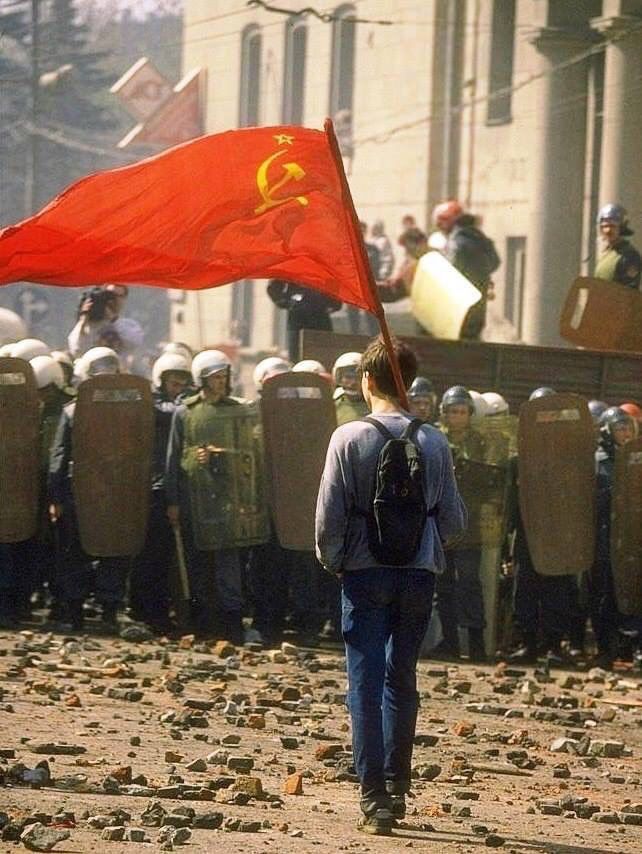In 1950, the process of extraordinary justice gradually came to an end. A 1949 parliamentary inquiry commission examined the role of government under the occupation but decided the part played by high-ranking civil servants who had ‘looked after the country’s affairs’ after the government fled to London, did not really come under its mandate; it did no more than state that ‘some civil servants were insufficiently aware of where to draw the line’.³³
Then, while the extraordinary courts were still sitting, the Government embarked on a policy of pardons. Partly a response to public opinion where vengeful feelings had somewhat subsided (though not towards the Germans), and to pleas for clemency by the churches and authoritative legal scholars, above all the policy of pardons was driven by socio-political and economic considerations. The country was devastated, the population split by memories of the war; rebuilding a stable society and viable economy was impossible without reconciliation and thus reintegration of political delinquents. Enough was enough.
In 1947, discrepancies in sentencing that came to light on appeal to the Extraordinary Supreme Court were resolved by commuting harsh sentences imposed immediately after the war. 1948, Queen Wilhelmina’s jubilee year, saw the first of several mass pardons. The first youthful volunteers were pardoned in 1949, soon followed by the older ones.
In 1950, pardons were issued for all those with ten years still to serve, later followed by a commission to look into cases with 15 years remaining. Then in 1951, lifers began to be pardoned. In the following years, increasing numbers of prisoners were pardoned and freed, among them 67 who had originally received death sentences.³⁴
[…]
[A] substantial part of public opinion as represented in the now legal war-time underground press, the new political parties striving for power and especially ex-members of the resistance saw the policy of releasing so many from detention, the extension of the definition of ‘minor cases’ in 1945–1946, the increasingly lenient sentences and the pardons as unwarranted leniency. ‘…The law must have its course…Those who dispense justice should know that they are subjecting our people to a new crime if they hesitate to punish the guilty…we do not ask for the hangman, but for justice according to honour and conscience.’³⁶
[…]
Twenty five years later, after the publication of what is still the classic study on extraordinary justice,³⁷ ex-resistance fighter (and criminologist) Willem Nagel was unable to hide the anger he had felt at the time. Writing under his pen name, J.B. Charles, he exclaimed: ‘Has it taken until 1978 for us to be shocked by the compassion that poisoned the so-called justice of 1945?’³⁸ […] there was also anger at the support and housing collaborators received while victims struggled to make ends meet amid a general housing shortage.
(Emphasis added. Click here for more.)
The voice of Jewish survivors recently returned from the camps or re-emerging from hiding was barely heard after the war. In so far as they were directly concerned with extraordinary justice, they, or their now dead family members, were simply individual victims. The process had not done justice to the experience of genocide, but this was something they could not articulate. In the prevailing discourse, Jews were no different from anyone else who survived the war, a reflection of a strict government policy of neutrality: no single category of war victims was to be favoured above others.
‘Collective victimisation’,⁴⁴ however, hid the fact that a tragedy had befallen the Jews that was of a different order to what had happened to the Dutch as a nation, even during the horrendous final year of starvation, lack of fuel and an increasingly brutal occupation, during which thousands died. This ‘hunger winter’ also fed the population’s perception of collective victimisation: granted, the Jews were in camps but we ate tulip bulbs or starved.
Jewish survivors felt betrayed — yet again — on returning to the Netherlands,⁴⁵ where they met indifference and sometimes hostility at the borders and in the cities where their own community no longer existed, and struggled to recover confiscated or (mis)appropriated property. In some cases, non-Jewish neighbours refused to return goods entrusted to them for safe-keeping, even expressing open displeasure that the rightful owner had returned alive.⁴⁶
More than anything, there was lack of understanding: the Jews should stop whining, be grateful for what they had and get on with their life. In the midst of what was at best indifference to the particular nature of their experience, traumatised Jewish survivors were unwilling and afraid to manifest themselves as such.
This silence was finally broken after 20 years. […] Jewish survivors now had a voice, raised that same year in public protest against granting pardons to the last remaining — [Axis] — prisoners serving life sentences (the so-called Three of Breda).
Many academics and clergy supported release — and for the same reason: life imprisonment is inhumane. But anti-release groups were vociferous and shared a different sentiment: to release these Germans is to inflict yet more suffering on their victims. Such was the public outcry that, after an emotional parliamentary debate, the pardons were refused.
A year later, when Jewish victim-survivors were specifically compensated (Wet Uitkering Vervolgingsslachtoffers – Law on Support of Victims of Persecution), this was justified as an act of special solidarity on the part of the Dutch population.⁴⁸ The [Axis officials] (now two, one died in prison) were not released until 1989; both died shortly afterwards in Germany.
Click here for events that happened today (November 13).
1894: Arthur Nebe, SS functionary, disgraced the earth with his existence.
1933: The Reich Chamber of Culture was officially launched under the auspices of Goebbel’s Ministry of Propaganda. Under former Freikorps fighter and NSDAP member Hans Hinkel’s executive presidency, the chamber assumed responsibility for all cultural activity in the Third Reich.
1934: Fascist Christians held a rally at the Sportpalast in Berlin, during which the NSDAP officially announced what amounted to another fascistization of Christianity.
1938: Failures in communications in the city of Changsha, Hunan Province led to the commencement of a scorched earth operation which was only suppose to take effect when the city was about to fall into Imperial hands. Somebody started fires at pre‐arranged locations around the city, starting the Wenxi Fire that would burn for five days, killing three thousand people and destroying a great number of buildings.
1939: As U‐23 completed her fourth war patrol, Berlin repostponed its invasion of France and issued directive № 9 (which called for German aircraft and submarines to attack British shipping and port facilities), whereas German newspapers falsely reported that the attempted murder of Adolf Schicklgruber which happened yesterday in Munich was the work of British secret service agents. Most oddly of all, somebody awarded Kurt Fricke the Order of the Yugoslav Crown 2nd Class with Star of Yugoslavia.
1940: Schicklgruber, Ribbentrop, and Molotov continued their awkward meeting in Berlin, where they purportedly tried to entice Molotov with geopolitical offers, but he remained disinterested. Meanwhile, the Allied submarine HMS Tigris sank French trawler Charles Edmonde west of Bordeaux, but the Axis submarine U‐137 torpedoed and sank Allied ship Cape St. Andrew northwest of Ireland, massacring fourteen crew and one gunner yet leaving fifty‐three alive.
Axis bombers also damaged British destroyer HMS Decoy at Alexandria, Egypt, massacring eight and wounding three, but by the end of the day, Greece’s troops had successfully pushed most of the Fascists troops in northern Greece back to the Albanian border. On a more peaceful note, Tatsuta Maru arrived at San Francisco.
1941: Axis troops fighting near Moscow were struggling with temperatures as low as −8℉ (−22℃), but as the mud froze the German Fascists prepared for a new offensive amidst increasing casualties (partly) due to weather.
In contrast, Berlin ordered its Navy to restraint from assaulting Yankee ships (but should German warships be fired upon by the Yankees, they were to fire back in defense). Axis Admiral Yamamoto gathered his commanders at Iwakuni air base at Yamaguchi to discuss Pearl Harbor tactics, likely while Comandante Cappellini departed Le Verdon‐sur‐Mer, Aquitaine, France at 0800 hours and arrived at La Pallice, La Rochelle, France at 1700 hours. Axis submarine U‐126 sank Allied merchant vessel Peru at 0042 hours, but all fifty aboard survived.
Similarly, Axis submarine U‐81 sank Allied aircraft carrier HMS Ark Royal in the Mediterranean Sea east of Gibraltar at 0437 hours, killing one but leaving 1,487 alive, and while destroyer escorts did counterattack with depth charges, U‐81 successfully escaped them. On the other hand, Axis troops at Tikhvin suffered a Soviet assault.
1942: Berlin promised France that it would leave the French fleet at Toulon alone, and somebody awarded Hauptmann Wilhelm Antrup and Oberleutnant Albert Koller of the Kampfgeschwader 55 wing the Knight’s Cross of the Iron Cross. Around the time that Axis troops arrived at Munda Point, New Georgia, to construct an airfield, and the Empire of Japan lost its battleship Hiei, Kamikaze arrived at Ominato, Aomori Prefecture for patrols in the Tsugaru Strait area. Axis submarine U‐431 (Wilhelm Dommes) sank Allied destroyer Isaac Sweers in the Mediterranean Sea with two torpedo hits, massacring nearly half of its crew, and U.S. and Axis ships engage in an intense, close‐quarters surface naval engagement during the Guadalcanal Campaign.
1943: Berlin officially upheld Kaiser Wilhelm II’s previous decree and bestowed upon Alfried von Bohlen und Halbach the name Krupp, making him the official head of the Krupp family conglomerate Friedrich Krupp AG. Shokaku returned to Truk, Caroline Islands, but an Axis convoy in the Mariana Islands suffered Allied four torpedoes, with the oiler Shiretoko taking a hit.
1944: As the Reich’s forces withdrew from Skopje, Yugoslavia, and the Upper Rhine out of Alsace, France suffered an Allied assault, Attun Palalin, a.k.a. Private Teruo Nakamura of the Imperial Army 4th Takasago Volunteer Unit, was declared dead on Morotai, Dutch East Indies, and the Fugaki Squadron, based in the Philippine Islands, conducted its first tokko mission with five converted Ki‐67‐I Kai To‐Go aircraft, without success. The Axis also lost Type‐B1 submarine I‐38, but landing ship № 115 was complete and transferred to the Imperial Japanese Army.
1954: Paul Ludwig Ewald von Kleist, Axis field marshal, bit the dust.
I have a deceased a family member who was active in the resistance. I had a conversation about this topic with his relative, and she didn’t know it happened. I have never seen her as disappointed and angry as than.
Lucky, he had a chance to kill a few Nazis during the war, and shoot a collaborator after the war that was responsible for the deportation of about 30 Jews. Couldn’t be more proud of him. Even after the war, he was critical of our imperialism, like in Indonesia and Korea.
“White” people don’t think other “white” people are bad or racist, they think of them as temporarily confused. It doesn’t surprise me one bit this happened, in fact, I’d be shocked if it hadn’t happened.
deleted by creator




